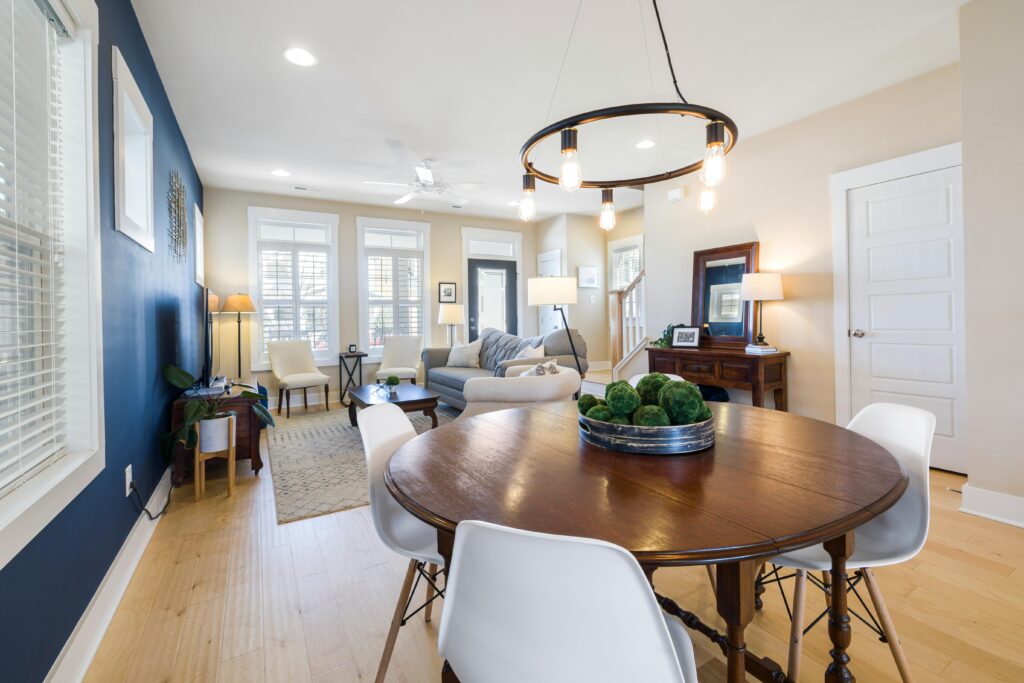Selling an old house can seem overwhelming, especially if the home needs renovations. Whether you’re looking to attract buyers with the charm of an older property or you’re trying to avoid the hassle of major updates, you need to understand your options. This guide will walk you through the various strategies for selling an old home, from making targeted renovations to selling as-is. So, let’s take a look at your options and get practical tips to help you navigate the process with confidence.
- Options for Selling an Old Home
- Tips for Renovating an Old House to Sell
- Tips for Selling an Old House Without Making Renovations
- Frequently Asked Questions About Selling an Old Home
[CTA_FORM]
Your Options for Selling an Old Home
1. Renovate & Restore the Home
Renovating can be a smart option if your home has great bones but needs some updates to attract buyers. Focus on cost-effective improvements that provide the highest return, like kitchen upgrades, bathroom remodels, or improving curb appeal. Small changes, like a fresh coat of paint, new fixtures, or modern appliances, can significantly enhance the home’s appeal and value. Keep in mind, though, that larger projects like new flooring or replacing windows may be necessary to compete in the current market.
PRO TIP: Be mindful of your renovation budget and choose upgrades that align with local market expectations. Major renovations require a significant investment in both time and money. Make sure to evaluate if the effort and costs will provide the return you’re expecting before diving in.

2. Sell the House As-Is
If you don’t have the time, money, or desire to make any repairs or updates, selling your home as-is can be a good option. While you may need to lower your asking price, this can attract buyers looking for a fixer-upper or an investment property. Be upfront about any major issues like roof leaks or foundation problems so buyers are aware of what they’re getting into. Marketing the home’s potential can help make it more appealing, even with its imperfections.
PRO TIP: Selling as-is works best in a seller’s market, where demand is high, and buyers are more willing to overlook repair needs.
3. Sell to a Cash Home Buyer
For a quick, hassle-free sale, selling to a cash home buyer can be a good solution. These buyers are typically investors who are willing to purchase the property in any condition, meaning you can skip repairs, inspections, and lengthy negotiations. You might receive less than market value, but the convenience of closing fast and without added costs can make up for it, especially if you’re in a hurry to move or don’t want to deal with the traditional selling process.
PRO TIP: Research cash buyers thoroughly to ensure you’re working with a reputable cash home buyer who offers a fair deal. If the idea of managing a full renovation sounds daunting, a cash home buyer can provide a hassle-free solution that puts money in your pocket without the stress.
Pro Insights on The Biggest Challenges of Selling an Older, Outdated Home
Selling an older, outdated home presents unique hurdles—from navigating code violations to managing costly repairs. Our franchise owners weigh on some of the biggest challenges homeowners face when trying to sell older homes.
Determining a Buyer’s Credibility and Understanding a Home’s True Value
Some key challenges include assessing whether a potential buyer can be trusted to close the deal and accurately determine the value of the home, especially for those with limited real estate experience. Additionally, identifying potential issues with the electric, plumbing, or foundation can be difficult, particularly if you haven’t lived in the house before.
Avoiding Costly Repairs & Knowing Your Options
The main reason to consider selling for cash when dealing with an older home is the potential cost of repairs. Cash buyers generally do not require any repairs before purchasing, whereas traditional buyers might request repairs that can be expensive. Often, fixing one issue in an older home leads to discovering multiple others, especially when the home doesn’t meet current building codes.
Understanding What Will Deter Buyers
“Older homes often come with outdated features or necessary repairs that can deter buyers. To attract interest, highlight the home’s unique charm and potential while managing expectations around cost and effort. Rather than expensive renovations, consider simple fixes like painting or decluttering to enhance appeal. If repairs are extensive, selling the property ‘as-is’ to a cash buyer can provide a quicker, hassle-free solution.”
Addressing Key Issues Before Selling
“Foundation problems are a big concern. A home’s foundation is crucial to its structure, and fixing it can be expensive and stressful. Other important considerations include old appliances, which can increase utility bills and detract from the home’s appeal, and outdated HVAC units, which can lower the home’s value. Even something as simple as broken light fixtures can be dangerous and unappealing. Finally, it’s essential to set a realistic asking price. Consult with a local real estate agent who can provide insights into current market conditions and guide your pricing strategy.”
Deciding Whether to Repair or Sell As-Is
“The main challenges sellers of old houses face are passing inspections for buyers who rely on traditional lenders and attracting buyers willing to take on the necessary work. Before deciding whether to repair or sell your house as-is, evaluate your skills and connections. If you’re not handy or don’t have reliable contractor relationships, you could find yourself overwhelmed with time, money, and stress trying to complete repairs. I recommend consulting trustworthy real estate investors, realtors, and contractors to make an educated decision on whether repairs or a quick sale to an investor is best for you.”
[CTA_FORM]
More Tips for Renovating an Old House to Sell
When you get involved with a house renovation project, you’re taking on a huge responsibility. When someone else is going to live in the home, there’s some added pressure. You are obligated to honor the house’s past, make it function in the present, and think about its future potential.
Tip #1: Understand the Commitment That Home Renovations Require
You need a team of professionals to assist in a home renovation. A professional contractor can assess the amount of work it will take to restore the home and give you an estimate of how much the list of updates will cost. A home inspector will be able to detect safety issues, code violations, and other potential hazards that need to be addressed. If you’re renovating an older home, you may consider relying on a historic preservation expert as a consultant. They can offer advice on how to move through the restoration process and still maintain the integrity of the home.
No matter who you enlist to help, you should make sure everyone understands the goal of your project from the start. You must be clear about what elements you’re trying to preserve and what components are cleared for demolition.
Tip #2: Start With Bones Over Beauty When Prioritizing Renovations
You might be tempted to start changing out cabinet hardware or replacing outdated ceiling fans right away. However, you need to complete a list of practical jobs before you even think about dealing with the aesthetics. This is where your home inspection will come in handy. They can investigate serious matters that should be handled first. Are there issues with water damage? Does the chimney need work? Is there a problem with the foundation? What about faulty wiring? Picking out new kitchen appliances and applying a fresh coat of paint can wait. The order of tasks on a typical home remodel timeline may look something like this:
- Planning
- Demolition
- HVAC, electrical, & plumbing
- Framing & drywall
- Painting
- Cabinets & fixtures
- Doors & windows
- Clean house & air vents
- Flooring
- Trim & finish work
As you can see, painting doesn’t come into the picture until halfway through the project. You have to make sure the house functions properly before you make it pretty.
Tip #3: Restore the Home to Modernize & Preserve History
Updating the heating and cooling unit, as well as the electrical system, may be necessary not only for safety concerns but also for modern convenience. However, with technology such as split systems, smaller units can be placed in the attic and basement to cover the home without damaging the historical aspects.
You should keep in mind that it’s better to restore than replace. Refinishing old hardwood floors that were covered by carpet can bring a lot of character into a home as well as save money on new flooring. On the other hand, if the stove is from the 1970s, the new owner would probably appreciate it if you purchased a new one.
Tip #4: Think About the Home’s Future When Restoring a Home
When you’re determining the budget for your house restoration project, you need to consider the home’s resale value. You should do some research on other renovations in the area and find out what those homes sold for. You must be smart about your investment. You don’t want to put more money into the home than you’re going to get back in a sale.
When you’re restoring a home, most of your decisions should be based on timelessness, not trends. If you only focus on the present in terms of aesthetics, the look will probably be outdated again in several years. You need to embrace the character and uniqueness of the home and do your best to highlight and preserve those features for the next owner. It is possible to mix the past, present, and future.
Tips for Selling an Old House Without Making Renovations
Tip #1: Market Unique Home Features
When selling an older home, it’s important to highlight its unique and charming features. Things like original woodwork, antique fixtures, or historical details can make your property stand out to buyers looking for character.
While you may not have done renovations, focusing on the home’s distinctive qualities can draw in buyers who appreciate vintage or architectural elements that are hard to find in newer homes. Be sure to include these details in your listing description and photographs.
Tip #2: Stage the Home to Maximize Appeal
Staging your home can help potential buyers see its full potential without the need for renovations. Remove clutter, rearrange furniture, and add neutral decor to create a welcoming and spacious environment.
Even simple changes like fresh linens, well-placed plants, or light staging in the living areas can help buyers envision themselves living in the home and make it easier for them to overlook any imperfections.

Tip #3: Price the Home Competitively
If you’re choosing not to make any renovations, it’s crucial to price your home competitively. Research local listings of similar older homes and set a fair price that reflects the property’s current condition.
Overpricing an older home in need of updates can turn away potential buyers. By pricing it strategically, you can attract more interest and potentially get multiple offers, even without making improvements.
Work with a real estate agent familiar with the local market to ensure your price reflects both the home’s potential and its current state.
Tip #4: Offer Incentives to Buyers
If your home needs work but you’re not willing to make renovations, consider offering incentives to make the sale more attractive. You might offer a closing cost credit or provide a home warranty that covers potential repairs for the first year.
These perks can help mitigate buyers’ concerns about taking on a home that may require updates or maintenance and make them more comfortable with purchasing as-is.
Frequently Asked Questions About Selling an Old House That Needs Renovations
Are Old Houses Hard to Sell?
Old houses can be challenging to sell, especially if they need significant repairs or updates. However, many buyers are drawn to the unique charm and character that older homes offer. By marketing the home’s unique features and pricing it competitively, you can still attract buyers, even if you don’t make any renovations.
What Is Considered a Poor Condition for a House?
A house is generally considered to be in poor condition if it has significant structural issues, outdated systems, or visible damage like roof leaks, faulty plumbing, or major electrical problems. Homes with extensive wear and tear, water damage, or code violations may also deter potential buyers.
How Do I Sell a House in Very Bad Condition?
Selling a house in very bad condition often involves finding the right buyer, such as an investor or cash home buyer, who is willing to purchase the property as-is. You may need to lower the asking price and be transparent about the home’s problems. Offering incentives, like covering part of the closing costs, can also help attract buyers who are willing to take on the necessary repairs.
Should You Renovate Before Selling Your Home?
Renovating before selling can increase a home’s value and appeal to a wider range of buyers. However, it’s not always necessary, especially if the cost of renovations won’t yield a significant return.
Is Resorting an Old House Worth It?
Restoring an old house can be worth the investment if the home has valuable architectural details or historical significance. However, it’s important to evaluate the costs and potential return on investment before committing to a restoration project.
Avoid Renovation Projects & Sell Your Old, Outdated Home to New Again Houses
At New Again Houses, we understand that renovating an old home can be overwhelming and costly. Instead of pouring money into repairs and upgrades, consider selling your property to us. Our team specializes in buying homes in any condition, so you don’t have to worry about making costly improvements.
We offer a streamlined process that allows you to sell your home as-is and receive a fair cash offer. This approach provides a quick and hassle-free solution, letting you move forward without the stress of renovation projects.
If you don’t think you have the time, money, and energy to spend on such a big project, New Again Houses will buy your outdated home in its current condition and beautifully restore it for future families to enjoy. Contact us about selling your home fast!




